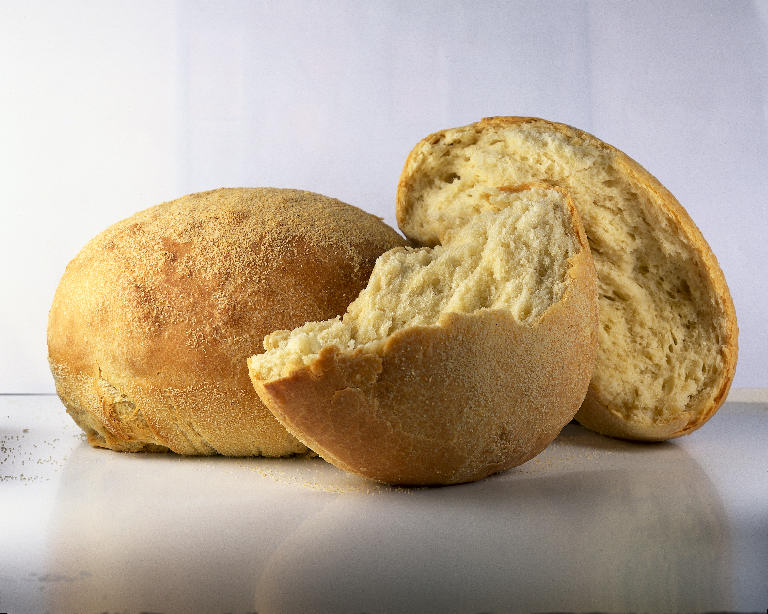Thoughts about creating life out of the good for nothing rags of injustice threadbare hope
The following article was originally published in the May/June 1994 edition of Church & Society. Download a PDF of the original here.

I begin with a poem by Kathleen O’Keefe Reed, a clergywoman of the Evangelical Lutheran Church in America. It is titled “Creatio Ex Nihilo”— “Creation Out of Nothing.” [1]
Putting her hands on hips
That would not have been known to exist
Except in such moments
She expands an equally ephemeral breast
With the breathing of a satisfied sigh
That wants to be eternal
She looks dawn upon her latest creation
And says to herself,
Hattie, you sure did blend your colors nicely this time!
She is the ragrug woman
Gatherer of good for nothing
Weaver of worth
Expert in creatio ex nihilo
Her joy any ball of cloth not fit for dust
Whatever is worn out she receives
Just dump it right here on the kitchen table
Where her hands hover over the chaos
Where fingers dance with scissors, thread and needle
Making strands of life emerge.
 From rags she weaves
From rags she weaves
Works of art you can walk on
Solid spirals with centers
You can stand in and look into
finding the pieces:
The snowsuit you wore the day you steered your sled
into a tree — where did the blood go?
The uniform your father wore home
from the war—where did the blood go?
The scarf you had on the day your lover
locked you out — where did the blood go?
For the first time
It all makes sense.
The title, the theological Latin of Creatio ex nihilo, signifying orthodoxy, becomes complicated when placed in the context of women’s experience. Who knows what it means to create ex nihilo! Women know. This is not the philosophical or existential nothingness that philosophers and theologians with high salaries mull over. This is real nothing, as in “good for nothing.” To gather what is “good for nothing,” to weave worth out of what is worn and worn out, to gather this on the kitchen table, hands hovering and fingers dancing, weaving rags, braiding scraps, making strands of life emerge—now that’s creating out of nothing. “These are works of art that you can walk on,” she says, “solid spirals with centers you can stand in and look into, finding the pieces.”
Out of pieces, women weave sense and community, making life emerge out of the good for nothing, out of the fragments of our lives. That is creation out of nothing. Standing in another woman’s spirals, solid, women can cooperate into creating women’s “something” lives. Women take the nothing that results from destructive injustice, from violence, from accidents, and we wash away the blood, and at the table of creative necessity we make the strands of life emerge. This is not because we’re the most caring creatures on the earth, or necessarily the most sensitively feeling, or the most noble, or, I hope, not because we’re the most self-sacrificial creatures on earth. No, we do this because to survive as a woman, in the late twentieth century, most women must create out of nothing.
___________________________________________
To gather what is “good for nothing,” to weave worth out of what is worn and worn out…making strands of life emerge—now that’s creating out of nothing.
___________________________________________
The poet says that for the first time it all makes sense. For the first time this strange, odd doctrine of creation out of nothing makes theological sense to her, when she puts it in the context of women’s actual lives. To create out of traditional theological ex nihilo is rather impressive, I would grant. It’s rather like the magic show that we see on television or in the circus, where out of thin air, there’s the rabbit; out of thin air, there’s the earth; out of thin air, there’s the universe. Well, I grant, it has its impressiveness.
 Indeed, when I think of the traditional “God creates out of nothing” I too am now and again provoked to think, now how in the devil did he do that? No hands, only words, dirty-free creating. Neat. Clean. How in the world do he do that? Four volumes later they’ve told you. The problem is, you are as perfectly ignorant after reading the volumes as you were before. So, to re-imagine the doctrine of creation is to re-imagine how much more difficult it is to create life out of what’s at hand, out of the worn-outness of our lives, the good for nothing rags of injustice and threadbare hope. To make something out of that—that’s impressive.
Indeed, when I think of the traditional “God creates out of nothing” I too am now and again provoked to think, now how in the devil did he do that? No hands, only words, dirty-free creating. Neat. Clean. How in the world do he do that? Four volumes later they’ve told you. The problem is, you are as perfectly ignorant after reading the volumes as you were before. So, to re-imagine the doctrine of creation is to re-imagine how much more difficult it is to create life out of what’s at hand, out of the worn-outness of our lives, the good for nothing rags of injustice and threadbare hope. To make something out of that—that’s impressive.
In the traditional model, creation is an act of autonomous solitude. Women who are re-imagining creation know from our own lives that creating is an action of women in community. It’s cooperative work in interdependent lives. Where did those rags come from, and who did the braiding, and who was standing in the spiral, and who’s in this room talking about it? That’s creation in women’s lives.
___________________________________________
The idea of creation out of nothingness is related to a lot of mythology of the political and economic system of this country. It’s related to the idea of the New Frontier, as if this were a nothingness over which the Europeans ran in their search for something unique and wholly original.
___________________________________________

We can re-imagine creation because to be in the image of a Creator who creates out of nothing gives us false ideas about human life; that creation is making something totally original or making something the first time ever with nothing like it. The idea of creation out of nothingness is related to a lot of mythology of the political and economic system of this country. It’s related to the idea of the New Frontier, as if this were a nothingness over which the Europeans ran in their search for something unique and wholly original. It’s related to the ideas of planned obsolescence: get rid of stuff so you always start from scratch; produce more and sell more to keep capitalism going. And it’s related to private ownership. This creating is something that is mine. I can possess it because it is out of my individual isolated production of the new that this has come.
We have to re-imagine the doctrine of creation because in so much of the traditional orthodox understanding, creation is understood as determined, eternal, unchanging expression of divine will. That is downright dangerous for women’s lives.
To say “This is the way God created us to be” is the preface in church conversations and elsewhere that signals a deep power struggle. That power struggle is often around sexuality, often around race, and often around money:
This is the way God created us to be: perfectly heterosexual and monogamous.
This is the way God created us to be: perfectly capitalist and rich.
This is the way God created us to be: white.
This is non-negotiable, because God willed a certain form of coitus.
How often have we heard that kind of theological use of the doctrine of creation?
We need to re-imagine the doctrine of creation because, if you create out of nothing, the something is always a problem. We get theological investigations of the relationship between the Creator and the creation. Are they connected after all? Is God wholly transcendent or is God partially immanent? Is pantheism pagan or is pantheism a defensible Lutheran position? It all boils down to the burning question that is the real question if you start from creation literally out of nothing: What do God and the world have to do with each other anyhow? They have been construed as so different that you really must struggle to get them reconnected again.

Creating is the ongoing activity of making strands of life emerge, as Kathleen O’Keefe Reed says in the poem. If creating is taking the good for nothing and redeeming and saving, the relationship of creating and the world is not a dilemma. It is called daily life. Braiding the threadbare into a strand that is strong and beautiful, a place on which to stand, is what women know creation to be about as an act.
We are all ragrug women. This is difficult because we are such different women who are re-imagining theology. We do not have the same bags of scraps. We are all ragrug women creating out of the good for nothing, but we are not in the same kitchens, or the same boardrooms, or the same pulpits, or the same schools, or the same sidewalks with all our worldly goods in a shopping cart.
___________________________________________
To say “This is the way God created us to be” is the preface in church conversations and elsewhere that signals a deep power struggle.
___________________________________________
We are wonderfully different, diverse, richly intriguing women with unequal distribution of power among us. The clothes that make some of us comfortable are the moth-eaten rags that other women have to work to transform into justice. We create not ex nihilo. We create out of the good for nothing of, for example, racism. The violence that tears the fabric of the lives of Lakota women in the United States, of Latinas, of African-American women, of Japanese-American women and Korean-American women, the violence that tears the lives of Puerto Rican women, of Eskimo women, is the very fabric that keeps warm my body as a German-American woman.

The privilege of my whiteness keeps me as warm as this polyester shawl. That very shawl that on me seems so comfortable is a system of interdependent power arrangements so ordinary that whites especially don’t even have to think about it. My power must become good for nothing rags if I am to join with them at the kitchen table. I must be willing to shred what seems to me so comfortable if I am to participate on an equal basis with African-American women. I have to get rid of that which makes me comfortable as a white woman if we are to sit together at the table of women’s creation.
If only we could create out of nothing, what leisure and privilege it would be. But we can’t. We have to create out of homophobia and heterosexism. Any god can create bliss out of nothing—but try creating it out of homophobia and heterosexism. In this situation the violence that tears the fabric of others’ lives is the violence that homophobic heterosexual women have to give up.
There are kitchens where the ragrug lesbians of the world, the ragrug bisexual women of the world, are working away in the creation of justice while you and perhaps I sit in the comfort of fear, not realizing that the moths of injustice are eroding us from behind. Or what about creation out of the nothingness and creation out of the concept of private property? There’s a challenge for a creation. There are already sitting around in kitchens ragrug women earning a dollar a day weaving these polyester shawls and AFDC women weaving out of necessity the braided rugs of justice for women.
___________________________________________
The privilege of my whiteness keeps me as warm as this polyester shawl. I must be willing to shred what seems to me so comfortable if I am to participate on an equal basis with African-American women.
___________________________________________
What rags do we middle-class women bring? What creative shredding of our affluence is necessary if we are to get off the theological rhetoric and talk about a new re-imagining of creation? How much are we willing to engage in tearing the long strips off in order to braid that new rug? How much would you be willing to shred your most treasured possession? What would you be willing to shred in order for the braided rug of all women to be created in the kitchen called the church? Think and talk about it: the sound of women talking is the voice of a re-imagined doctrine of creation, I think.
 You may be wondering what happened to God in my redefined doctrine of creation. It’s women sitting around the kitchen table. We’re shredding the rags of our privilege. And together we’re braiding new rugs as a good, strong, beautiful place to stand to find the meaning of it all—and to create justice.
You may be wondering what happened to God in my redefined doctrine of creation. It’s women sitting around the kitchen table. We’re shredding the rags of our privilege. And together we’re braiding new rugs as a good, strong, beautiful place to stand to find the meaning of it all—and to create justice.
Where is God in all this? I would say that God is not the one who creates ex nihilo. That’s not a theology that will help us in the future that confronts us. A theology that may help us is that the only God we know, the only God we’ll probably find, is the God who is in the nihilo as women are braiding it together at the kitchen table. It is the God who is found precisely in the good for nothing.
___________________________________________
[1] “Creatio Ex Nihilo” © by Kathleen O’Keefe Reed. Used by permission.
AUTHOR BIO: Elizabeth Bettenhausen is coordinator of the Study/Action Program at the Women’s Theological Center in Boston, Mass., and a member of the faculty in Feminist Theology and Theory there. A visiting lecturer on Ethics at Harvard Divinity School, and previously a visiting lecturer in Theology at Harvard, she is a member of the Evangelical Lutheran Church in America. This is adapted from her address in the major presentation group on Creation at the Re-imagining Conference, November 5, 1993, in Minneapolis.
Read more articles from this issue, “Hearing the Voices of Peoples Long Silenced”: Gender Justice 2014!





Unbound Social